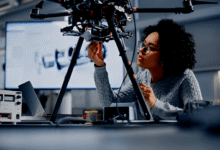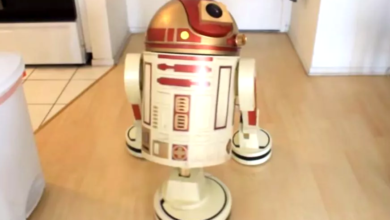What is a Decentralized Autonomous Corporation (DAC)?

With the emergence of Bitcoin in the digital financial arena, many concepts were brought to the fore. Concepts around which new ideas have been generated and consequently, innumerable projects have been developed. Decentralized autonomous corporations (DAC) and decentralized autonomous organizations (DAO) are the product of the implementation of these innovative ideas.
But among them, Decentralized autonomous corporations are emerging as another decentralized governance option that is starting to gain traction in the blockchain world. Continue reading this article to discover more details about the topic of DACs and how they are revolutionizing the business world on the blockchain.
Read more: Ten Crypto Industry Leaders Are On Forbes’ New 30 Under 30 List
DACs is an acronym used for Decentralized Autonomous Corporations. These are companies that are run by rules encoded in computer programs called smart contracts. A financial transaction record of a DAC, as well as the rest of its operations, are incorruptibly and irreversibly embodied in a blockchain. The legal status of this type of business organization is relatively recent, and consequently, it is not yet clear.
Through the DACs, the objective of establishing companies that are based on blockchain technology for their operation is pursued. Something possible thanks to the use of smart contracts that manage different aspects of the company without practically any human intervention. It is in these contracts, where are all the codified rules of the company. The decentralized nature of the DACs provides them with a fundamental egalitarian and cooperative business structure. An organization that displaces the hierarchical organization like the one we see in traditional businesses.
It is appropriate to clarify that the autonomous aspect does not refer to the absence of humans in the operations of the company, but rather, that the decisions, operations, and the direction of the company are taken by means of a consensual protocol in a decentralized distributed network, that is, without the presence of a governance board. All of this gives DACs their distributed character based on cooperation.
Read more: 5 Technological Breakthroughs of Medical Circles in 2021
History of Decentralized autonomous corporations (DACs)
Since the implementation of the blockchain in the network as a public digital ledger, many ideas have emerged based on the features that these blockchains offer. Among those ideas are DACs, which are decentralized autonomous organizations that are characterized by the use of blockchain technology. Due to its decentralized nature, it eliminates the need to involve a mutually acceptable trusted third party in a transaction. But not only that, it is possible to program the operation of advanced systems that work completely autonomously. Without a doubt, the perfect space to create decentralized governance systems.
The first mention of DACs is due to Daniel Larimer. It was he who first proposed the concept of ” Decentralized Organized Enterprise ” in an article published on September 7, 2013. A concept that, incidentally, was implemented in Bitshares in 2014 and EOSIO in 2018.
Later, Vitalik Buterin presented his work “DAO, DAC, DA and more: an incomplete terminology guide”. A job that explains that a DAO could be organized to function without human management interactivity. How? Using smart contracts that were backed by a Full Turing platform. Later, Buterin would make Ethereum a reality by creating such a platform.
How does a DAC work?
A DAC works as an intelligent, programmable, and verified digital property running on a chain of blocks. This programming is possible thanks to the fact that said blockchain accepts smart contracts or smart contracts. These contracts have all the programming that makes the DAC work. All that code is free and accessible to everyone, so anyone who participates in the DAC will know how it works. In fact, participating in the DAC is taken as the tacit acceptance of these operating rules that apply uniformly to everyone within the DAC. In short, none of the participants has a privileged position over the others.
Read more: Top 10 Best Reminder Apps for Android 2021
However, beyond this, it is also generally assumed that decision-making power and even works done to achieve the company’s product or service is also “distributed. ” That is, any gains within the DAC are spread across a large number of peers, each of which has the same level of authority. Said distribution, assumes, assumes the already known programming of the DAC. Something that is generally done taking into account the level of participation of people in the DAC itself.
On the other hand, the use of smart contracts in the DACs gives it autonomy to carry out those operations that do not merit the presence of humans, which provides a fairly significant degree of independence of the DAC from human intervention. For example, they can be established in smart contracts, scheduled payments to its investors and employees, payments for various services required by the DAC, among other things. You can basically see a DAC as a huge company that is run automatically thanks to the programming of its smart contracts.
Pros and cons of DACs
Pros
- One of the most obvious advantages of DACs is the automation potential that can be achieved through the use of smart contracts.
- The decentralized and distributed character through the blockchain makes the DAC a company with a cooperative and egalitarian structure, in addition to the elimination of a centralized entity in decision-making, both in the use of funds from the DAC and in the direction the company should take at any given time.
- Decisions are made by consensus among those who participate in the DAC and their transactions are registered in the blockchain and in public view, giving confidence and transparency to the procedures that are carried out.
- The presentation of a proposal, as well as the vote in favor of it, requires the investor to spend a certain amount of money, in this sense the person is obliged to evaluate their decisions before wasting time and money in proposing solutions that could be ineffective.
Cons of DACs
- Lacking a legal framework, participation in DACs implies assuming investment risks, which is the case in many businesses in the cryptographic ecosystem.
- As it is a relatively new technology, there are still many security aspects that must be covered in order to provide security and peace of mind to those who participate in these types of companies.
- Due to its imprecise legal status of this type of business organization, there is a risk of not being recognized by institutions such as the Securities and Exchange Commission of the United States. As such, known participants, or those at the interface between a DAC and regulated financial systems, may be the target of civil or enforcement actions.
Conclusions
These organizations are not just a theoretical concept. Projects like Aragon, Bitshares, and Colony have already taken over in this space. Satoshidice, an online casino, is another unexpected entity that embodies what a DAC is. With projects like these already in operation, it is clear that we have barely scratched the surface of what the DAO model is truly capable of becoming.
DACs solve the hierarchical problem present in traditional companies since DACs provide everyone with a monetary interest and participation in decision-making. In this way, feelings of belonging and acceptance are fostered. This results in more motivated employees who will dedicate the time and effort to the long-term success and prosperity of an organization.
On the other hand, due to the novelty of this technology, the code of a DAC or a DAO may contain vulnerabilities that will be difficult to correct once the company has been put into operation, this represents potential points of attack for hackers, as happened with The DAO from where a hacker stole a significant amount of money, exposing the flaws in the underlying code of this DAO.











